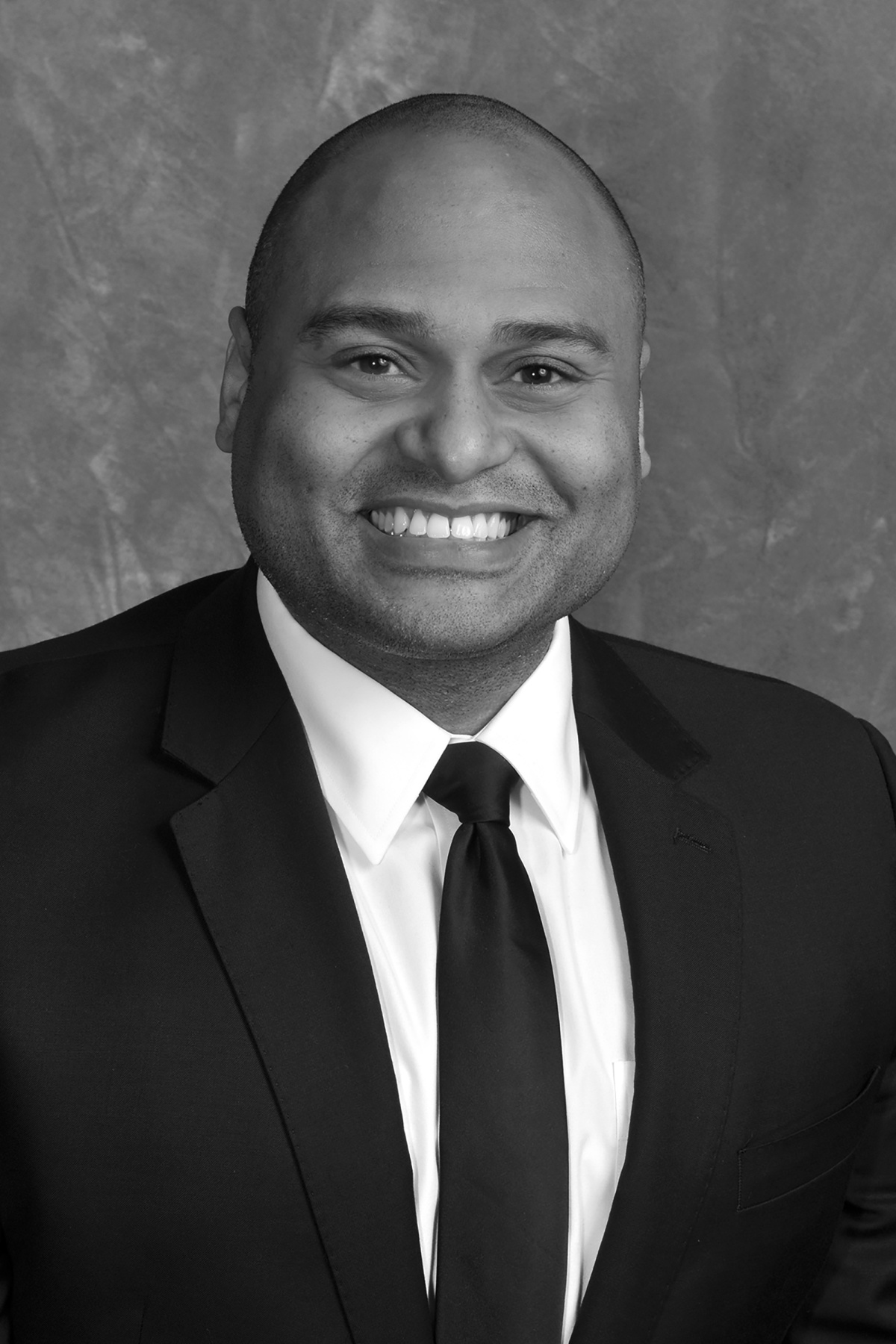As we age, our brains undergo numerous changes, making brain health a crucial aspect of senior care. Understanding the unique challenges and needs of the aging brain empowers both seniors and caregivers to take proactive steps in maintaining cognitive health and overall quality of life for older adults.
Continue readingEating Well to Live Well: The Importance of Senior Nutrition
As we age, our nutritional needs change, and it becomes increasingly important to pay attention to what we eat. Good nutrition is essential for seniors to maintain their health, energy, and overall well-being. In this blog, we’ll discuss the importance of nutrition in seniors and provide some tips on how to maintain a healthy diet.
Why is Nutrition Important for Seniors?
Good nutrition is essential for seniors for several reasons:
- Healthy Aging: A well-balanced diet can help seniors maintain good health and reduce the risk of chronic diseases such as heart disease, diabetes, and osteoporosis.
- Energy and Vitality: Seniors who eat a healthy diet are more likely to have the energy and vitality they need to enjoy life and engage in physical activities.
- Maintaining a Healthy Weight: As we age, our metabolism slows down, and it becomes easier to gain weight. A healthy diet can help seniors maintain a healthy weight, which is essential for preventing chronic diseases.
- Improved Mental Health: Good nutrition can also improve mental health and cognitive function, reducing the risk of depression and dementia.
Nutritional Needs of Seniors
Seniors have unique nutritional needs that differ from younger adults. As we age, our bodies require fewer calories, but our need for certain nutrients, such as protein, calcium, vitamin D, and vitamin B12, increases.
- Protein: Seniors need more protein to maintain muscle mass and strength. Good sources of protein include lean meats, fish, poultry, beans, and nuts.
- Calcium and Vitamin D: Older adults need more calcium and vitamin D to maintain bone health and prevent osteoporosis. Good sources of calcium include dairy products, leafy greens, and fortified foods such as cereals and juices. Vitamin D can be obtained through sunlight exposure, but it can also be found in fatty fish and fortified foods.
- Vitamin B12: As we age, our bodies become less efficient at absorbing vitamin B12, which is essential for healthy brain function and the production of red blood cells. Seniors may need to take a supplement or eat fortified foods such as cereals or soy milk to ensure they are getting enough B12.
Tips for Maintaining a Healthy Diet
- Choose nutrient-dense foods: Seniors should focus on foods that are high in nutrients and low in calories, such as fruits, vegetables, whole grains, lean protein, and low-fat dairy products.
- Stay hydrated: Seniors may have a reduced sense of thirst, so it’s essential to drink plenty of fluids throughout the day, such as water, tea, and low-sugar fruit juice.
- Limit sodium: Seniors should aim to consume no more than 1,500 milligrams of sodium per day to reduce the risk of high blood pressure and other health problems. They can do this by choosing low-sodium options and avoiding processed and packaged foods.
- Eat smaller, more frequent meals: Seniors may find it more comfortable to eat smaller, more frequent meals throughout the day rather than three large meals.
- Make mealtime social: Eating with others can be enjoyable and can provide social interaction, which is important for mental health and well-being.
Good nutrition is essential for seniors to maintain their health and well-being. By choosing nutrient-dense foods, staying hydrated, limiting sodium, and eating smaller, more frequent meals, seniors can maintain a healthy diet that supports healthy aging and a high quality of life.
Related Articles:
Dehydration in Seniors: What to Look For and How to Help
Reducing the Risk of Stroke
Diabetes Awareness Month: Helping Seniors Manage Diabetes
Healthy Aging Month
Trees: A Symbol of Life & Memory
Today, we celebrate Arbor Day, a national holiday commemorating the beauty and life of trees and nature. At A Place At Home, we honor the holiday with our deeply rooted connection with the Arbor Day Foundation.
The roots of a tree hold powerful meaning; they nourish and create stability for the tree, building the foundation for healthy growth, and give back to the land around them. When Dustin Distefano and Jerod Evanich, founders of A Place At Home, thought about how the impact they wanted their senior-focused services to have, a tree is the first thing that came to mind.
Our philosophy at A Place At Home is rooted in CARE — care for our clients and their families, care for our staff, and care for our community. We strive to be Compassionate, Accountable, Respectful, and Ethical with every interaction — these are our roots, and they’ve allowed us to create a foundation of stability and nourishment to thousands of families in need over the last ten years.
Our CARE standards are what drive our partnership with the Arbor Day Foundation and their “Trees in Memory” program. For every client we have been honored to care for that passes away, A Place At Home plants trees in their memory. The trees planted in remembrance will leave a legacy for future generations, preserving the foundation built by those who came before us.
Since April of 2021, A Place At Home has planted 620 trees to honor those that have passed. These memorials can be found growing in Chippewa National Forest, Custer-Gallatin National Forest, Klamath National Forest, Superior National Forest, and Wallowa-Whitman National Forest. Each tree will stand as a lasting tribute to those families and clients who have touched our lives.
To read more about our partnership with the Arbor Day Foundation, click here.
Join in the celebration of life and nature by becoming a member of the Arbor Day Foundation. To learn more about their mission or to sign up, visit www.arborday.org.
A Place At Home Partners with Arbor Day Foundation to Provide Trees in Memory
A Place At Home joined the Arbor Day Foundation in a unique partnership to provide ‘Trees in Memory.’ Trees represent a powerful meaning to the A Place At Home Franchise brand and this partnership strengthens that connection through the ‘Trees in Memory’ program.
The co-founders of A Place At Home developed a logo with a deeper purpose. “We wanted a symbol that represents the strength, stability, and nourishment we bring to seniors and their families. The tree in our logo, is known as “the tree of life.” It serves as a reminder that we are deeply rooted in our C.A.R.E. philosophy and will provide Compassionate, Accountable, Respectful, and Ethical care to those we serve,” said Dustin Distefano, CEO of A Place At Home.
The Arbor Day Foundation was founded in Nebraska as was A Place At Home. “This partnership just seems natural. Not only are our services rooted in CARE, but when those we have cared for are gone, we plant trees in honor of them through the Arbor Day Foundation. The life of those we’ve served have meant something of significance to us and this small gesture will carry on their memory for future generations to provide a symbol of lasting peace and comfort,” said Jerod Evanich, President of A Place At Home.
A Place At Home has franchises nationwide that participate in the ‘Trees in Memory’ program. The trees planted serve as a living tribute that benefits present and future generations. The memorial trees are planted in National Forests. They provide long-term benefits such as cleaner air and water as well as the restoration of natural habitat. A Place At Home Franchise is proud of this unique partnership that will also make an impact on the environment.
To find an A Place At Home location near you, search here.
Long-Term Care Worries? We Have You Covered
$85,000 to $100,000. That is the current estimated cost per year to pay for long-term care.
Don’t think you’ll need it? Think again. There is a 70% chance that someone turning 65 today will need some type of long-term care. Those numbers will go up, as people live longer each year. Those care needs may be in the home or a senior living community.
While these numbers can be intimidating, there are options available right now to prepare you for your long-term care needs.
A Place At Home recently sat down with Matthew Hooker, a financial advisor with Edward Jones. He shared there’s not a specific age to start planning for long-term care. “I’ve seen people do it as early as 40-45. Because they have seen it, and they are willing to pay to avoid it.” He advises if you start early, then you can address it before it’s an issue. And that’s the best assurance you can get. In the past, long-term care policies were a use it or lose it proposition. It was incredibly expensive to carry a plan, and the rates would go up. Often when people transitioned to a fixed income.
Fortunately, that’s not the case these days. According to Matthew, now there are great options for long-term care policies.
Some of these are hybrid policies, encompassing coverage for both assisted living situations as well as life insurance. He explained some of the options available to help you prepare for your long-term care needs:
- Integrate long-term care into your budget (self-insuring): This allows you the most flexibility in choosing your care providers, but paying out of pocket for long-term care can be costly and can be a gamble for your financial goals.
- Long-term care insurance – If you choose to go through an insurance company, you have a couple of options:
-
- Traditional long-term care insurance:
-
- Policies and costs vary quite a bit, based on different things, such as your health, age, location of care, and more. It can ensure you won’t deplete your assets and income if you need long-term care. It also offers flexibility and possible shared benefits between two people. However, premiums are not fixed or guaranteed. You do still have to pay them, even if you don’t need care later.
- Life insurance with long-term care benefits: these policies are newer and can allow you to use the death benefit to pay for long-term care if you need to. Premiums here are generally fixed, and if no care is required, it provides a life insurance death benefit. There are additional costs with these hybrid policies, and the long-term care coverage is often less than with a traditional long-term care policy.
Saving for your potential long-term care needs can be like a roulette wheel. How you decide to plan for your future depends on your individual needs.
Matthew advises that whatever you decide to do to prepare for long-term care as you age, make sure you have a game plan that makes sense. “I take people’s priorities, their picture of retirement, and give them different vehicles to get to where they want to go.” He also shares that a large part of his role is interpreting what people’s needs really are. “Long term care, assisted living, nursing home care, people use all these words interchangeably, and none of them mean the same thing.” Matthew knows the difference between all of these, as well as the ever-changing rules and regulations, changes in legislation, and especially long-term care and assisted living. Everyone’s situation and goals are different. “I work with people and interpret whoever they are as a person.”
“Their experience? That experience is what you have to get down to, and really understand.”
Matthew will help you plan for how you envision your future. He does comprehensive planning, including full-blown insurance and investments, stocks, bonds, mutual funds, 401k’s, cash accounts, money markets, refinancing your home (which he does not recommend), estate planning, and trusts. Helping people is something Matthew has a passion for. He shares, “I truly love this profession, this job. I get paid for it, thank God because I would do this anyway. I love helping folks.”
Whatever your current situation or future goals are, A Place At Home recommends speaking with Matthew to ensure your needs are met. And to ensure you are set up for any potential long-term care needs you may have in the years to come. You can reach him by visiting his website, sending him an email, or calling him at 402-630-7379. With all the uncertainty, especially with what we’ve seen this year, reaching out to Matthew might be one of the best things you can do to prepare for your future.
Need guidance looking for in-home care, or choosing an assisted living community? Reach out to us today to explore your options!
Elder Abuse – Do You Know What to Look For?
June 15th is World Elder Abuse Awareness Day.
This day was conceptualized in 2006 by the International Network for the Prevention of Elder Abuse to promote awareness and understanding of the prevalence of elder abuse across the globe. In this blog, we explain some signs of abuse, and what you can do if you see or suspect it’s happening.
Each year, an estimated 5 million older adults suffer some kind of abuse.
Some signs of abuse can be obvious and easy to spot. When an aging adult is being physically abused, you might see things like broken bones, bruises or welts, or cuts and scrapes. But there are less obvious signs of abuse in a lot of cases. Financial abuse or exploitation is a perfect example of this. There may be signs such as large sums of money missing from bank accounts. Or the senior may be “gifting” monetary compensation in exchange for companionship. Perhaps the senior no longer has access to their financial records and accounts. This particular type of abuse is one of the most common.
On average, older Americans lose 2.6 billion dollars a year to financial abuse and exploitation.
Along with financial abuse, neglect is another of the most common types of elder abuse. Physical signs of neglect include bed sores or pressure wounds, or a lack of necessary medical equipment. You may also notice a case of neglect if the senior has poor hygiene, or weight loss due to a lack of proper nutrition. Dehydration and unsafe living conditions are also indicators of neglect in aging adults. Neglect isn’t always intentional. If the individual doesn’t have a support network, the neglect may be circumstantial, but it still needs to be addressed.
Another type of abuse that doesn’t present physically is emotional abuse. If you notice your loved one’s caregiver speaks to them in a demeaning, dismissive, or aggressive way, if they don’t allow you to be alone with your loved one, or over explain concerns about injuries or social withdrawal, don’t brush it off. Be concerned. If you notice something, say something.
You might question what’s going on behind closed doors if your loved one seems hesitant to speak freely to you, if they seem withdrawn, or express new anxiety, depression, or fear.
If you find yourself questioning whether or not an aging adult is safe in their situation, there are things you can do to help. First, if the abuse or danger is immediate, call 911. If you’re not sure, but suspect abuse or neglect, call your local Adult Protection Services agency. You can make your report anonymously, and they will follow up with you once they’ve investigated the situation.
None of us ever want our loved ones to be in a situation where they are vulnerable to abuse. While it’s generally not possible to be with our parents or grandparents 24 hours a day, we do have the option of bringing in a caregiver to help. But you want to be sure that person is someone you can trust. At A Place At Home, all of our caregivers are fully vetted with background checks and drug testing, and are bonded and insured to ensure you can be confident in the safety and well-being of your loved one. To learn more, visit us here.
May 12th is International Nurses Day
International Nurse Day is May 12, 2020. Nurses are an integral part of our lives in general and here at A Place At Home, but often we don’t think about them until there’s an immediate need. In the moment of an emergency, we rely on nurses to care for us, answer questions, and provide us with compassionate care. How often are we thinking of our nurses outside of those emergency situations?
International Nurse Day – A Day to Celebrate all the great nurses in our lives
Sure, we thank them in the moment, but do they receive our thanks the rest of the year? On International Nurse Day; a reminder to show our appreciation for the care they provide. International Nurse Day became recognized by the White House in 1974; 21 years after the idea was initially proposed. The date of observance was chosen to commemorate Florence Nightingale’s birthday, the founder of modern nursing.
Nursing is of course a career that these professionals voluntarily chose, but what a compassionate profession to choose! It takes a special person to give their all to care for people every day, and these people deserve to be commended.
Here are some ways you can show your appreciation:
- A simple ‘Thank You’ goes a long way! Especially if it’s out of the blue
- Omaha business owner? Offer a discount for those hard-working nurses that use your services!
- Drop off Starbucks cards at your local hospital or nursing home for a little pick-me-up during the 12-hour shifts
- Crafty kids? Handmade crafts or drawings can put a smile on any nurse’s face
- Volunteer at your local senior care facility or nursing home. Have the residents make cookies and distribute to the nurses
- Send catered lunch to the hospital. Short on cash? Bring extra veggies from your garden for an afternoon shift break
- Don’t forget about nurses in home care; they deserve special thanks as well!
There are plenty ways to show these individuals your appreciation. For more info about International Nurse Day, visit www.nursingworld.org.
Arbor Day – Love For Our Planet and Those We Hold Close
Arbor Day – it’s one of those holidays that we don’t take off work for, or exchange gifts. But for our planet, it’s one of the most important holidays of the year. The founder of Arbor Day, Julius Sterling Morton, had a passion for nature, and trees in particular. Originally from New York, Morton settled down in the Midwest, founding this holiday dedicated to trees in Nebraska, the same state A Place At Home was founded. It is estimated that one million trees were planted in Nebraska at the first Arbor Day celebration in 1872.
Impact on our Health and Environment
Trees have a major impact on our environment, and our health. Most people know that trees clean the air. But did you know that each year they remove over 46 million tons of air pollution, just in the United States? In the same amount of time, one mature tree will absorb more than 48 pounds of carbon dioxide from the atmosphere. In exchange, it releases oxygen. It’s no wonder then, that 20 percent of the earth’s oxygen overall is produced in the Amazon Rainforest. And trees don’t just affect our air quality. Studies have shown that just being able to see a tree significantly reduces stress levels and improves quality of life.
Impact on our Heart
Traditionally, people across the world celebrate Arbor Day by planting trees. Not just to be kind to the environment, but to honor loved ones who have passed away. It’s for this reason that Arbor Day, and the Arbor Day Foundation, is near and dear to our hearts. At A Place At Home, trees represent powerful meaning. Like others, we think of trees as the symbol of the vitality of life, and those that came before us, and those that will carry on after we are gone. It stands for families and ancestors. It stands for strength, stability, and nourishment.
Rooted in Care
For every client we have been honored to care for that passes away, A Place At Home plants trees in their memory. Since 2014, A Place At Home franchise network has planted almost 2,000 trees. Memorials to our clients are growing in Wallowa-Whitman National Forest, Superior National Forest, Chippewa National Forest, Custer-Gallatin National Forest, and Klamath National Forest. Each tree we plant reminds us of how grateful we are to have been touched by the lives of those families and clients.
If you’d like to celebrate this Arbor Day by planting a tree, why not go the extra mile and become a member of the Arbor Day Foundation. First time members get 10 trees free and you can sign up here.
If you or someone you know can benefit from extra support in the home, please reach out to us to see how we can help.
10 Tips for Navigating the Holidays and Alzheimer’s
Taking care of a loved one who has Alzheimer’s this holiday season? While being a caregiver is both challenging and rewarding, the holidays bring some special challenges and require a prepared, proactive approach.
Here are 10 tips to help you navigate the holidays while caring for someone with Alzheimer’s:
1. Find Ways Your Loved One With Alzheimer’s Can Be Involved
Just because your loved one has Alzheimer’s Disease doesn’t necessarily mean he or she can’t be involved in the holiday celebrations. Even if it’s something simple like packing holiday tins with cookies, assisting in decorating or wrapping gifts, or signing and sending greeting cards – it can mean a lot to the person doing it.
2. Write A Holiday Wish List
Some holiday gifts can be inappropriate or even dangerous for someone who has Alzheimer’s. So, take the time to create a wish list for your loved one this season. Get ideas from your loved one and others who know him/her, cross off anything that wouldn’t be a good idea given your loved one’s condition – and share the list online. Check out these gift ideas.
3. Let Others Know What To Expect This Holiday Season
Be sure to keep the whole family informed on all developments in your loved one’s Alzheimer’s condition. Let them know what he/she can handle and what he/she can’t. For example, patients with Alzheimer’s tend not to do well in conversations with multiple voices all going at once – one-on-one conversations are best.
4. Maintain Routine As Much As Possible
People with Alzheimer’s generally need to follow a pretty strict routine. It helps them avoid confusion, disruption, and needless stress. Thus, while there will be special events during the holidays, regular day-to-day activities should be maintained at all other times.
5. Consider A Holiday Lunch Or Brunch Instead Of Dinner
Alzheimer’s symptoms may be more prevalent during the evening hours, and it’s just harder on them to have guests over for a dinner party as opposed to earlier in the day. See if you can have people visit for a holiday lunch or brunch at Mom or Dad’s house instead of the (usually) more traditional dinner gathering. Or check with the Assisted Living community as sometimes Holiday meals may be offered.
6. Be Creative With Introducing New Holiday Traditions
Most of us tend to get stuck in a holiday rut, as it were, and the very thought of changing old holiday traditions may seem unsettling. But new traditions can be founded that accommodate the family member with Alzheimer’s and the fact you are spending a lot of time caring for him/her. Watching a favorite holiday movie together or meeting at a special restaurant are some examples.
7. Simplify The Holidays To Reduce Stress
As a caregiver, you will have less time to deal with the holidays than you may have had in the past. You don’t have to “skip” the holidays, but you probably do need to scale things back a bit. Little things like doing your Christmas shopping online or using gift bags instead of wrapping paper will save time and reduce stress.
8. Know Your Limitations & Ask For Help
Nothing can be more stressful than trying to do what you don’t feel qualified to do or what you simply can’t find the time to do. Ask other family members to help as needed and go to professionals for timely assistance and for help with anything outside your field of expertise.
9. Consider Holiday In-Home Care
You may not want to have your loved one move into a senior living community, or at least not yet while their condition is not too far along. De-stress the holidays by hiring in-home care and giving your loved one some special attention while you run errands. Contact A Place At Home – Omaha to learn how we can help your loved one during the holiday season and beyond where needed.
10. Join An Online Support Community
Finally, 10 tips are never enough – you need more! So be quick to join an online Alzheimer’s caregiver support community or talk with other caregivers to “pick their brains” for ideas and find resources, support, and encouragement!
In the end, it doesn’t have to be overwhelming for you and your loved one with Alzheimer’s. Remember that regardless of any memory issues your loved one lives with, it’s still important to include them in holiday events.
Caregiving Starts With Listening: Lorrie Van Roekel
Lorrie Van Roekel was named Caregiver of the Month for November.
Born and raised in Albion, Nebraska, Lorrie became a caregiver when she was 16 years old. She worked in the local nursing home with both her sisters. “One’s an RN and one’s an LPN now,” said Lorrie.
Lorrie has been a CNA for 40 years and people always inquired why she never became a nurse. They knew she’d make a great nurse. Lorrie explained that she really enjoys the one-on-one opportunity she has with seniors by being a caregiver. “I like it when I can stick with one client. I get to know them, and they get to know me. Margie is my main girl,” shared Lorrie as she smiled over at her client Margie.
She has been Margie’s caregiver for a few months now and it was her independent testimonial that won Lorrie Caregiver of the Month. “Lorrie is always on time, she’s very caring, we have great conversations, and you don’t have to explain to her how to boil an egg,” Margie shared with a chuckle.
Working with people of all ages in her career, Lorrie found herself drawn to the older generation, commenting on how she loves the stories they tell. She was very close to her grandparents and had the opportunity to take care of her grandparents and her mom because of her experience and training.
Working for A Place At Home
With a long career as a CNA, Lorrie said she was very happy to find A Place At Home. “The office staff has been so helpful and kind. I worked with another in-home company before and we never had staff meetings, we never had any training. This is so much better. I just love the interaction everyone has,” said Lorrie.
She also offered up some advice to younger CNA’s just starting out. She found in her 40-year career that it’s best to listen to what your client wants, don’t just hear them. You may think another way is better or easier but it’s important to listen and consider it may just be the way they like things done.
APAH Recruiting and Retention Specialist, Stephenie Garrison, shared that Lorrie is a very kind and caring individual. She added, “Lorrie is very attentive to her clients and goes above and beyond to make sure they are taken care of. We are very happy that she is an employee with us and look forward to seeing her grow as a caregiver in our company.”
Are you CARE?
A Place At Home’s “We are CARE” philosophy is a commitment to our core values: Compassionate, Accountable, Respectful, and Ethical. If you are interested in becoming a caregiver and hold those values true in your own life, reach out to join our team today.










